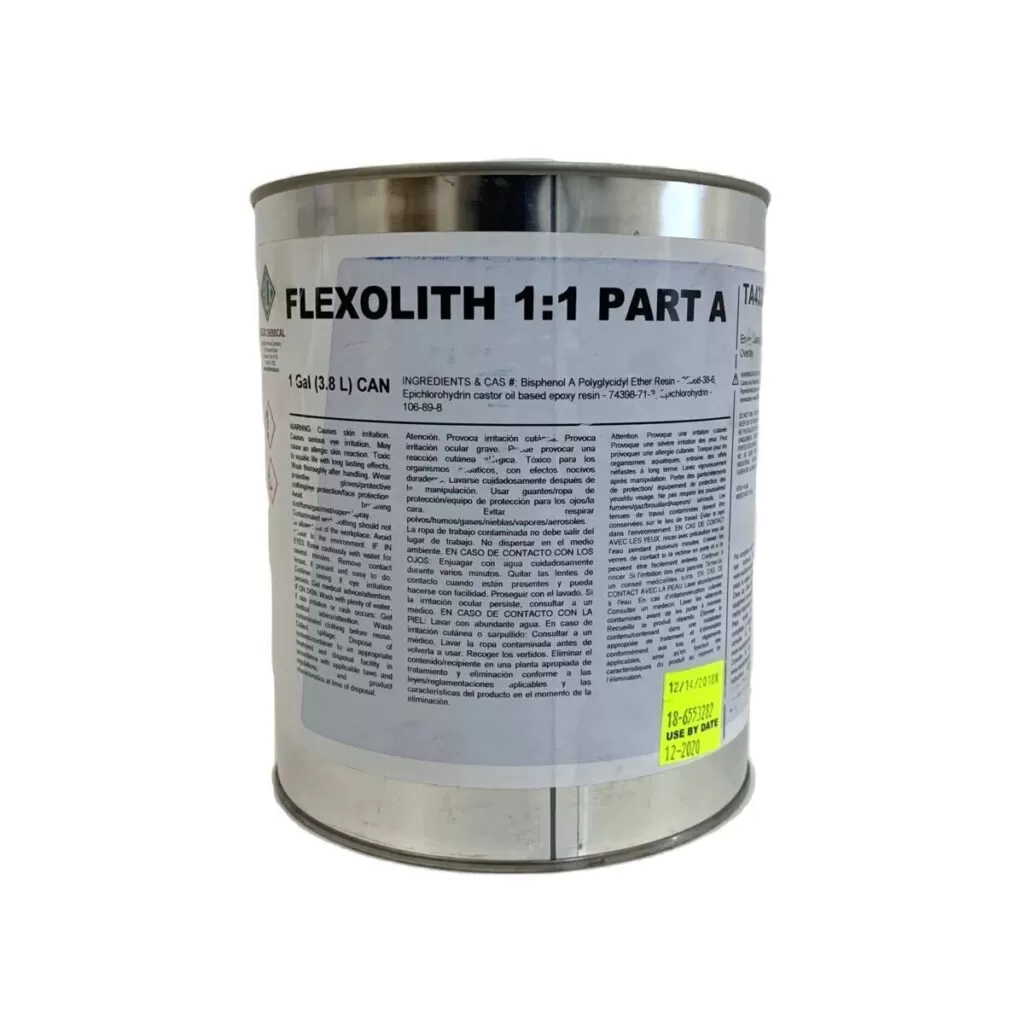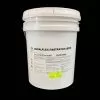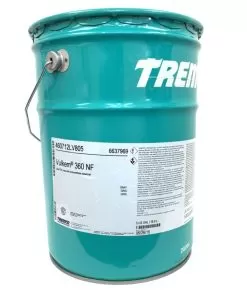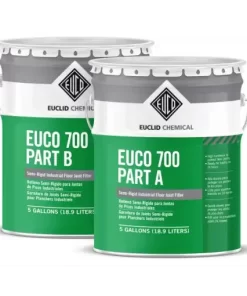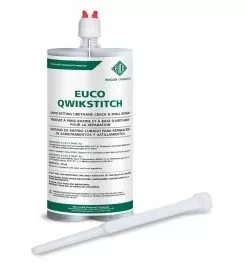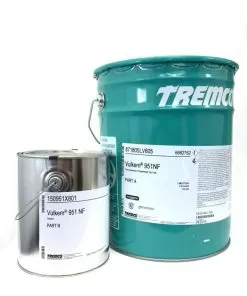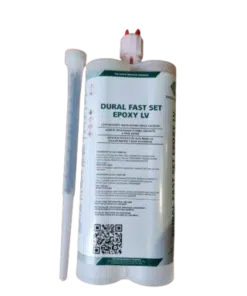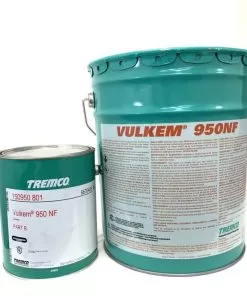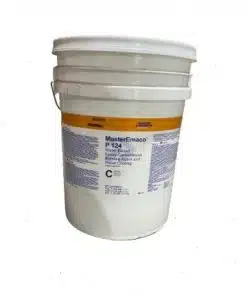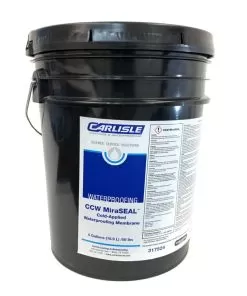Euclid Flexolith: 4 Gallon Unit
$450.00
- Rapid cure, minimizes down-time
- Easy to use
- Can be used as a mortar or broadcast system
- Parking decks
- Bridges
- Factories
- Warehouses
- Loading docks
- Nosing repair applications
- Cure time 1-3 hours temperature dependent
- ASTM C881-99, Type III, Grade 1 Class B and C
- AASHTO M 235, Type III, Grade 1
Euclid Flexolith: 4 Gallon Unit
Euclid FLEXOLITH is a two component, 100% solids, low modulus, moisture insensitive epoxy binder with properties which make it suitable for use in applications where stress relief and resistance to mechanical and thermal movement is required. Questions? Contact us
Surface Preparation: The surface must be structurally sound, clean and free of grease, oil, curing compounds, soil, dust and other contaminants that may interfere with bond. New concrete and masonry must be at least 28 days old. Surface laitance must be removed. Concrete surfaces must be roughened and made absorptive, preferably by mechanical means, and then thoroughly cleaned of all dust and debris. If the surface was prepared by chemical means (acid etching), a water/baking soda or water/ammonia mixture, followed by a clean water rinse, must be used for cleaning, in order to neutralize the substrate. The Concrete Surface Profile (CSP) should be equal to CSP 4-6 in accordance with Guideline 310.2R-2013, published by the International Concrete Repair Institute (ICRI). Allow substrate to dry before coating application. Following surface preparation, the strength of the surface can be tested if quantitative results are required by project specifications. An elcometer or similar tensile pull tester may be used in accordance with ASTM C1583, and the tensile pull-off strength should be at least 250 psi (1.7 MPa).
Do not apply epoxy or urethane coatings if there is excessive moisture in the concrete or if the moisture vapor transmission rate is high. Before application of FLEXOLITH, perform the “Visqueen test” (ASTM D 4263, modified to a test duration of 2 hours). Do not apply FLEXOLITH when the Visqueen test indicates the presence of moisture vapor transmission through the concrete. After surface preparation, a test section application ofFLEXOLITH is recommended to confirm good adhesion and compatibility of the coating with the surface, and also to confirm appearance and aesthetics.
When coating steel, all contamination should be removed and the steel surface prepared to a “near white” finish (SSPC SP10) using clean, dry blasting media.
Mixing: Mix Euclid FLEXOLITH using a low-speed drill and a mixing paddle. Pre-mix Part A and Part B separately for approximately 1 minute each. Combine Part A and Part B in a 1 to 1 ratio by volume, then mix thoroughly for 3 minutes.
To make Euclid FLEXOLITH mortar, gradually add clean, dry aggregate to previously mixed FLEXOLITH epoxy and mix thoroughly for 3 minutes. Aggregate types and quantites for mixing are listed in the “Coverage” section above. A low-speed drill and a mixing paddle may be used for small quantities, and a horizontal shaft mortar mixer may be used for large quantities.
Scrape the bottom and sides of the containers at least once during mixing. Do not scrape bottom or sides of the container once mixing operations have ceased; doing so may result in unmixed resin or hardener being applied to the substrate. Unmixed resin or hardener will not cure properly. Do not aerate the material during mixing. To keep aeration to a minimum, the recommended mixing paddles are #P1 or #P2 as found in ICRI Guideline 320.5R-2014.
Application: See the “Epoxy & Urethane Coatings Application Guide” for installation means and methods. Note that any coverage rates or mixing ratios for epoxy or epoxy-aggregate combinations found in the “Epoxy & Urethane Coatings Application Guide” are approximations, and are for general reference only. For product- specific coverage rates and mixing ratios, refer to this technical data sheet.
The recommended aggregate for heavy duty applications/skid-resistant overlays (high traffic bridge decks, parking deck turn lanes, etc.) is #8 or #4 basalt, #8 or #4 flint rock, or another similarly graded non-slip aggregate. For other applications, or where specified, silica sand aggregate may be used.
| Weight | 25 lbs |
|---|---|
| Dimensions | 10 × 10 × 21.59 in |
| Color | Clear, Light Gray |
Related products
All Products
Epoxies
All Products
Concrete Repair
All Products





